

Disha Gupta


An increasingly competitive business landscape, accelerated technology adoption, and the rise of a global workforce are all significant factors in a renewed focus on employee learning and development.
To meet the changing needs and the growing levels of investment in professional development, it’s essential for L&D teams to systematically develop improved learning experiences by applying an instructional design model that can be followed to produce a practical learning framework that aligns with the 70-20-10 model of learning.
There have been several instructional design models and processes defined through the years, but only a few have been widely accepted and implemented by leading corporate instructional design practitioners.
This article will explore the most widely-used instructional design models.
Instructional design is the process of creating effective training materials and experiences to facilitate learning and improve performance. It involves analyzing a learner’s needs and the characteristics of the target learning audience, defining training objectives, selecting appropriate instructional strategies and resources, designing and developing instructional materials, implementing and evaluating the effectiveness of the instruction, and revising and refining the instruction as needed.
Using an instructional design model provides a systematic and structured approach to designing, developing, and delivering training material. It helps ensure all learning material is effective, efficient, and engaging.
Here are a few important reasons to use an instructional design model.
Here are eight of the most common models of instructional design for corporate L&D and other learning organizations can follow and implement:
The ADDIE (Analysis, Design, Development, Implementation, and Evaluation) model represents an iterative, dynamic, and flexible guideline for instructional designers to build effective eLearning courses. The model gives you a streamlined, focused approach that provides feedback for continuous improvement.
Here are the five phases of the ADDIE model.
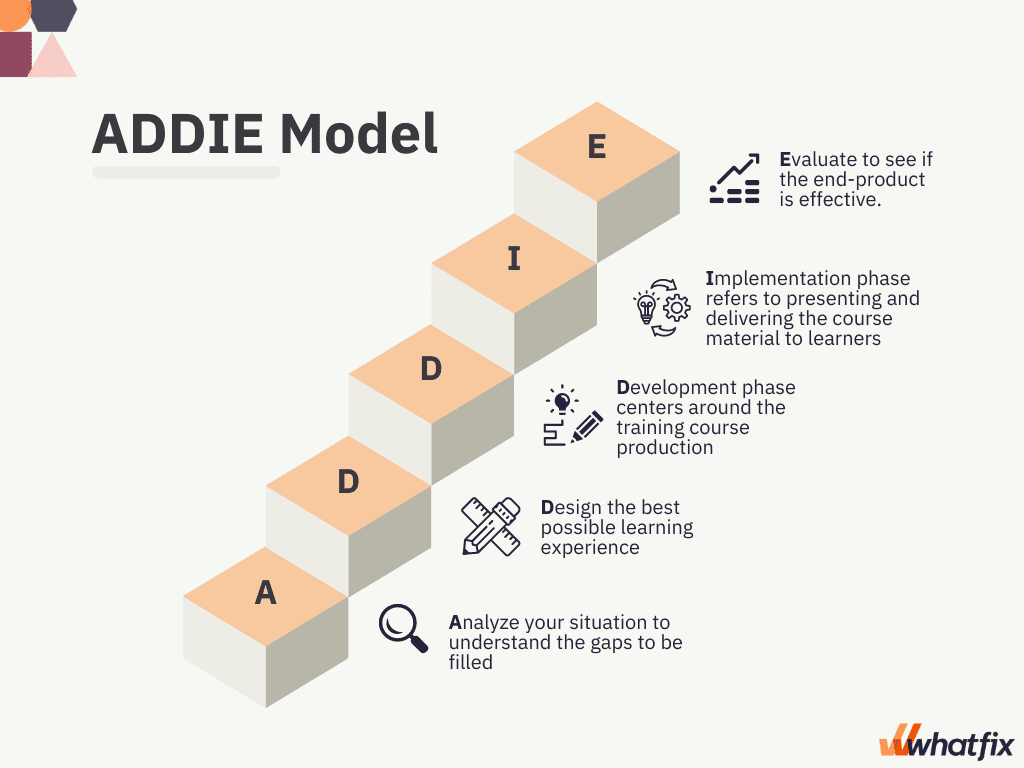
Bloom’s Taxonomy was first proposed by Benjamin Bloom in 1956 and has since been updated and revised by other educators. This instructional design taxonomy is hierarchical, with lower-order thinking skills at the bottom and higher-order thinking skills at the top.
For instructional designers, Bloom’s Taxonomy provides a useful tool for designing learning objectives and assessments that target specific cognitive skills. By selecting appropriate verbs for each level of the taxonomy, designers can ensure that their learning objectives are measurable and specific, and that they align with the desired level of cognitive skill development.
Phases of Bloom’s Taxonomy:
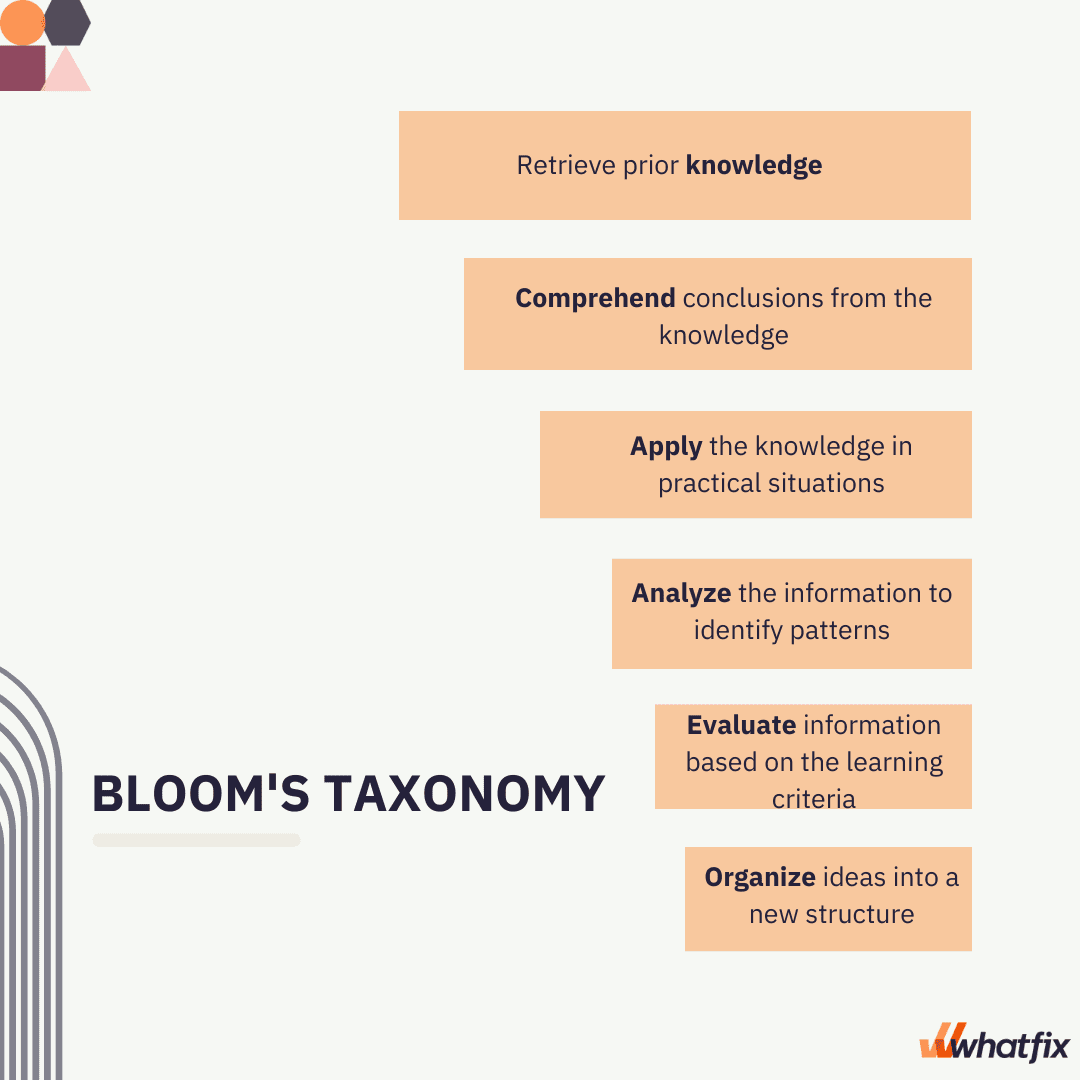
Merrill’s Principles of Instruction (MPI) is a task-centered approach that focuses on ways to facilitate learning. The five MPI principles involved in this instructional design model are:
For instructional designers, Merrill’s Principles of Instruction provides a useful framework for designing engaging, relevant, and practical instruction.
By incorporating authentic tasks, activating prior knowledge, demonstrating new concepts, providing opportunities for application and feedback, and organizing content for retention and transfer, instructional designers can create instruction that is more likely to achieve the desired learning outcomes.
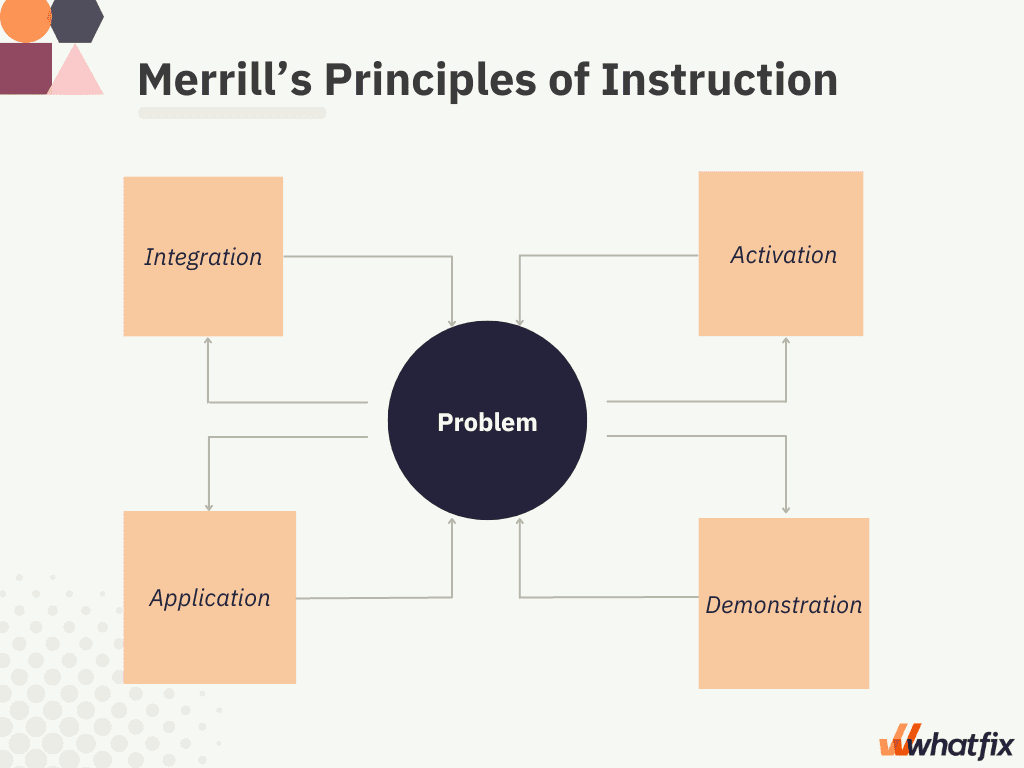
Robert Gagne’s Nine Events of Instruction is based on the behaviorist approach to learning. The framework identifies nine key instructional events to address in sequence to maximize learning:
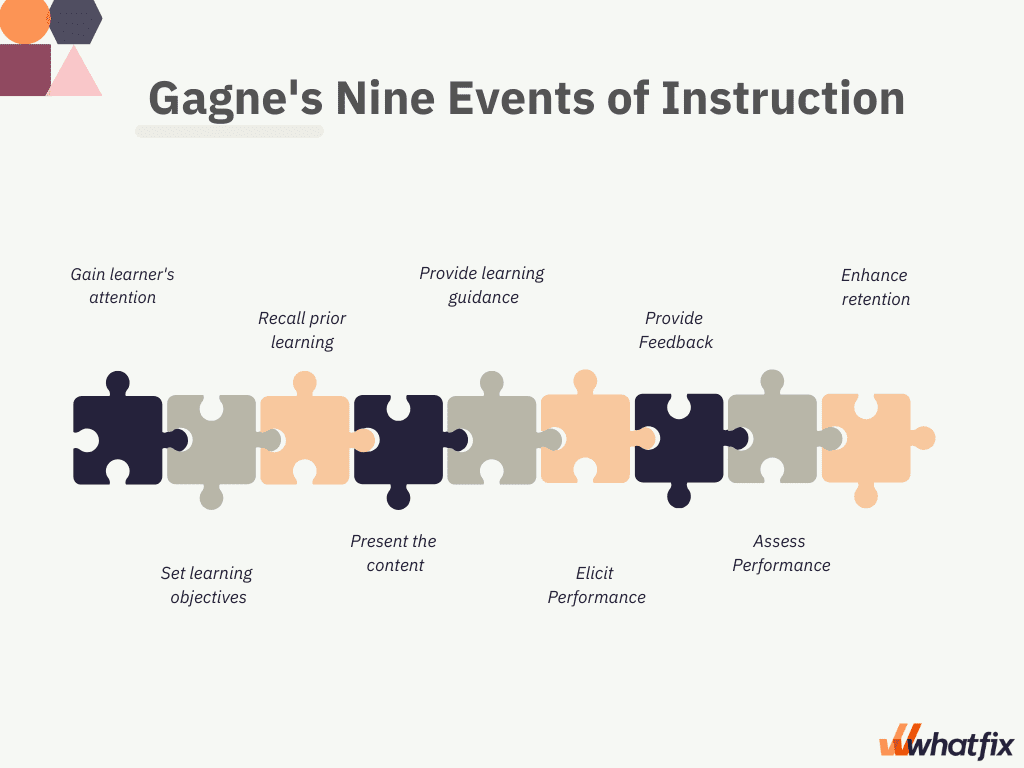
The Dick and Carey Model instructional design model provides a structured approach to designing effective content. There are nine interrelated components in the model to guide this instructional design process:
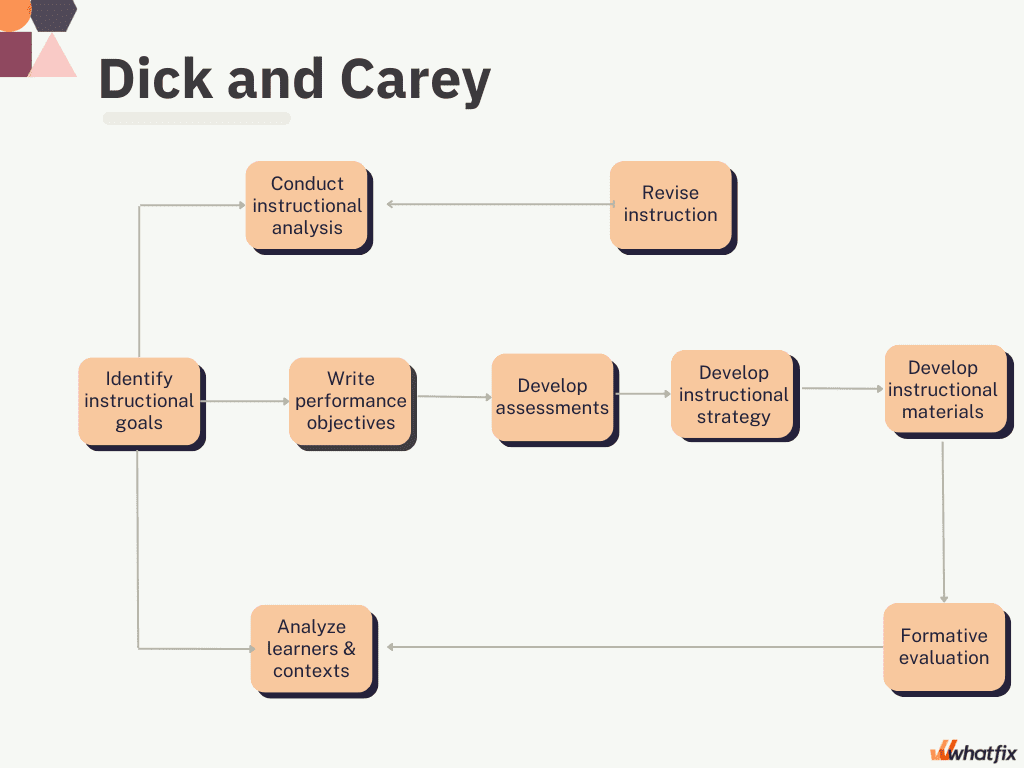
The Kemp instructional design model, also referred to as the Morrison, Ross, and Kemp Model, was developed by American instructional design researcher Jerrald Kemp. The model has a nonlinear or circular structure that conveys that the design process is a continuous cycle. This requires it to have constant planning, design, and evaluation to ensure quality instruction.
The Kemp Design Modelincludes nine elements:

According to Cathy Moore herself, the goal of Action Mapping is to “change what people do, not just what they know [with] action-packed materials that are 100% dedicated to improving business performance.” Moore claims that Action Mapping results in real actions, rather than merely delivering information.
The Action Mapping model includes four steps that act as the backbone of your eLearning course creation.

The Successive Approximation Model (SAM) is an approach used in instructional design that prioritizes rapid iterations, efficiency, and collaboration. It was developed by Dr. Michael Allen of Allen Interactions and is the main alternative to more traditional instructional design models, like the ADDIE model.
The SAM Model is an agile, recursive process for instructional designs that doesn’t follow a traditional linear design path for course and learning content development.
The original SAM Model, SAM1, consists three major phases:
SAM2 is a more detailed version of the original SAM1 model and is intended for larger projects. It includes additional steps within the three main phases, such as evaluation and design reviews.
A significant advantage of the SAM Model is its iterative nature. Rather than having to get everything right the first time, the design and development process allows for continual testing, feedback, and improvement. This can make it a better and more contextual fit for complex projects or situations where user feedback is crucial. As the design and development phases are iterative, the course materials can be revised multiple times based on feedback, resulting in a more effective and engaging learning experience.
With a digital adoption platform like Whatfix, enable your employees with in-app guidance and contextual self-help IT support to accelerate the adoption of new software implementations, employee onboarding, change initiates, and more. Whatfix’s no-code editor enables IT teams with a no-code editor to create product tours, interactive walkthroughs, task lists, smart tips, pop-ups, self-help wikis, and more. Analyze and measure user engagement and software usage to identify friction points, measure digital adoption, and improve employee digital experiences.
A digital adoption platform (DAP) like Whatfix provides a range of no-code features that enable instructional designers to create, analyze, and deliver in-app guided learning and performance support experiences.
By leveraging the capabilities of a DAP, instructional designers can create in-app instruction that is engaging, relevant, and effective in achieving specific learning objectives. Furthermore, Whatfix is the world’s only SCORM-compliant in-app guidance tool, enabling you to easily create interactive courses and upload the content to your LMS in just a few clicks.
Schedule a free demo to learn more about Whatfix for L&D and see how Fortune 100 companies are driving training ROI with in-app guidance and on-demand support.
Thank you for subscribing!